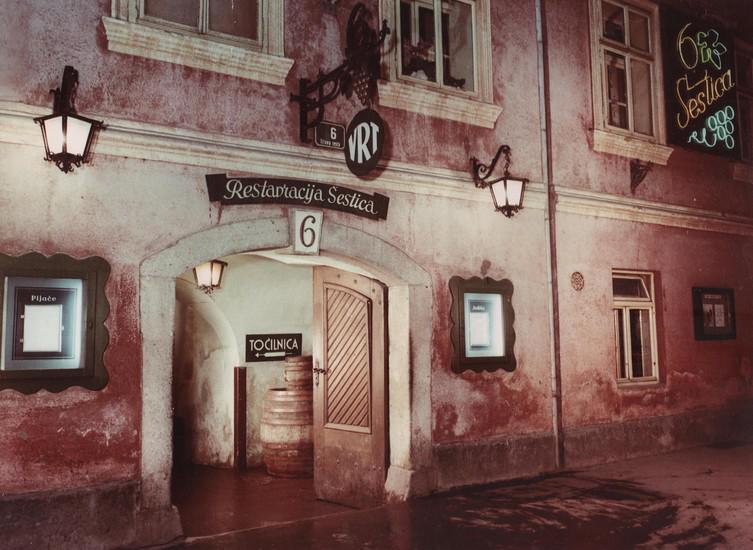
It’s not known when the first building was constructed on the spot of the present-day inn, along Ljubljana’s Slovenska Cesta, a major urban thoroughfare. In old panoramas of the city, the structure is depicted as a small, thatched cottage on the edge of the town. But in 1776, the year of American independence, the building was transformed into an inn. Its location was perfect for carriage drivers traveling into Ljubljana from around the Hapsburg Lands, and it eventually became a popular staging post. Its name – meaning “The Six” in Slovenian – refers to its longtime street number.
Over the years, Šestica changed hands many times. Some of the owners struggled to make a profit, while others left lasting impacts on the restaurant business. Among the visionary proprietors was Aleš Zalaznik, who owned Šestica in the early 20th century. He transformed the old inn into a modern urban restaurant by combining the old and the modern. During his ownership, intellectuals such as the famed architect Jože Plečnik frequented the gostilna.
Zalaznik died suddenly in 1924, and the inn was nationalized by the Communist authorities after world War II. It remained a landmark – Marshall Tito himself was once a guest – but the quality of its food began to decline.
With new restaurants sprouting around Ljubljana, Šestica now faces more competition than ever before, and its management has recently focused on the tourist trade. But Šestica remains a local landmark; as one of only a handful of remaining urban inns, it is keeping a venerable Ljubljana tradition alive.

































































